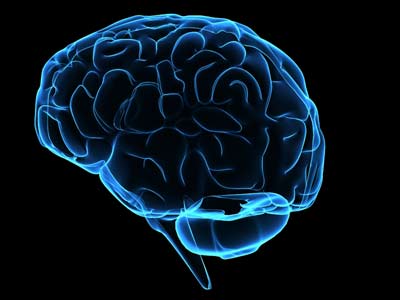Questioning Assumptions about Dyslexia

Posted in GUMC Stories
 Guinevere Eden, PhD, learns a lot about dyslexia by proving what it isn’t. Two recent studies she led challenge popular notions about the reading disorder, underscoring the complexity of what is believed to be the most common learning disability.
Guinevere Eden, PhD, learns a lot about dyslexia by proving what it isn’t. Two recent studies she led challenge popular notions about the reading disorder, underscoring the complexity of what is believed to be the most common learning disability.
Here are a few facts everyone accepts: Dyslexia is a universal disorder, seen in people of all intelligence levels. It affects between 5 and 12 percent of the world’s population, depending on the language spoken within nations. Given that English offers so many exceptions to language rules, the U.S. and the United Kingdom tend to have higher rates of dyslexia than a country like Germany, where language rules rule.
But the causes of dyslexia are still being debated, says Eden, director of the Center for the Study of Learning at Georgetown University Medical Center. “Many researchers believe that poor reading is due to a weakness in language processing with emphasis on awareness of phonemes — the smallest meaningful unit of sound — and letter–sound relations,” says Eden. “However, this is unlikely to be the only explanation for this reading disability, and I believe that genes, especially those that participate in brain development, are likely to be the root of the problem.”
Until those genes and their neurological effects are sorted out, Eden has long been trying to define the manifestations of dyslexia so that it can be effectively treated through intervention. It’s a mission she is devoted to and for which she is recognized. For example, Eden is immediate past president of the International Dyslexia Association, a group that promotes literacy through research, education and advocacy.
Two of her recent insights help define what dyslexia isn’t — and they have important implications for identification and treatment of the disorder.
Sex matters, vision matters less
Both studies used magnetic resonance imaging, one for measurement of brain anatomy, the other for brain function (functional MRI).
 Research published in May in the online issue of the journal Brain Structure and Function demonstrated that dyslexia might have a different brain-based manifestation based on sex. In other words, when considering brain function, the disorder is different in men compared with women.
Research published in May in the online issue of the journal Brain Structure and Function demonstrated that dyslexia might have a different brain-based manifestation based on sex. In other words, when considering brain function, the disorder is different in men compared with women.
Eden and Tanya Evans, PhD, also a member of the Center for the Study of Learning, undertook the study to address a deficit in previous dyslexia research. Less than 20 percent of participants in all previous studies were female — perhaps, in part, because dyslexia is two to three times more prevalent in males than in females. The assumption was that results of studies in men are generalizable to both sexes, Evans says.
The study, which included 118 participants of both sexes, found significant differences in brain anatomy when comparing men and women with dyslexia to their non-dyslexic control groups. “Our results were quite striking and suggest that brain anatomy in females with dyslexia is different from non-dyslexic females in ways that differ from a parallel comparison in males,” she says.
And in a June online study in Neuron, Eden and her colleagues showed that differences in the visual system do not cause dyslexia.
Beyond the primarily observed reading deficits, individuals with dyslexia often also exhibit weaknesses in processing visual stimuli mediated by the so-called visual magnocellular system, Eden says. Scientists have since speculated whether these deficits represent the primary cause of the disorder, with visual dysfunction directly interfering with learning to read.
The study, led by Eden and Olumide Olulade, PhD, a postdoctoral researcher in Eden’s group, confirm that differences do exist in the visual system of children with dyslexia, but their presence is not the cause of their struggles with reading, – but perhaps the end product of less reading when compared with typical readers.
“Using MRI to look at brain activity underlying visual motion processing, we tested a theory that is now more than 30 years old — the claim that dyslexics differ in how they process visual information in a specific pathway of the visual system,” Eden says. “We concluded that the differences in the visual system are not causal to the reading problems; rather, they are likely to be the results of the dyslexics reading less,” she says.
Treatment implications
Both studies may result in significant changes in the way the reading disability is treated, Eden says.
The sex difference study “suggests that boys and girls with dyslexia need to be considered separately, certainly for the purpose of research, and perhaps also for practice,” Eden says.
And the second study indicates that treatment targeting this specific type of visual deficit is not likely to be helpful to dyslexic students, she says. “There are many people who claim that vision therapy can help in dyslexia, and the study provides important evidence that the magnocellular visual system is not a promising target for treatment.”
Eden and her research team also use brain-imaging technology to investigate the brain’s responses to treatment approaches that work. “We can scan both children and adults with dyslexia before and after an intervention and examine where the brain has changed,” she says. “We can see new activity in areas that weren’t very active before, and in some people, we can tell that the brain recruits a whole new area to help it read.”
As Eden likes to say: “Dyslexia may be common — but there is nothing at all simple about it.”
